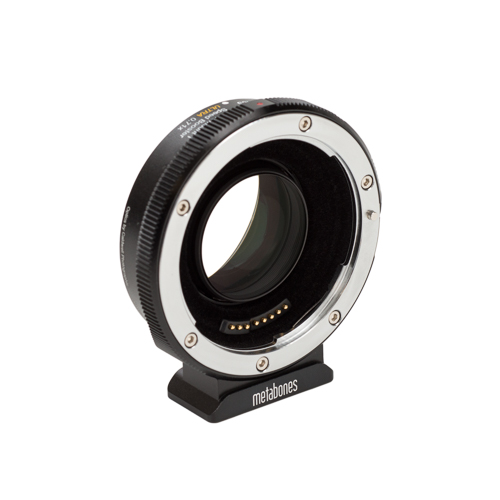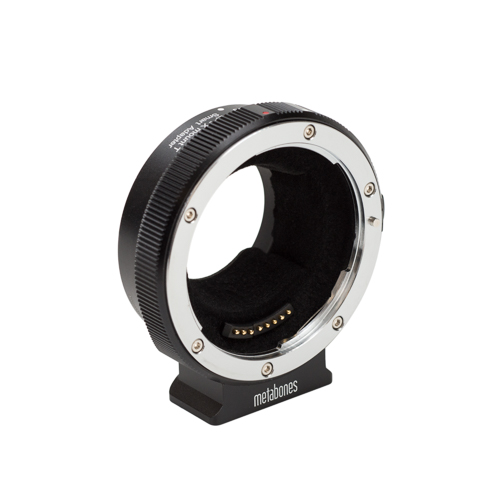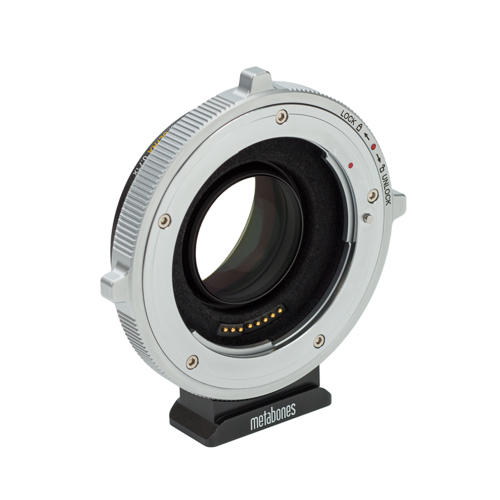
androidlad
-
Posts
1,215 -
Joined
-
Last visited
Content Type
Profiles
Forums
Articles
Posts posted by androidlad
-
-
2 minutes ago, James_From_Raglan said:
So the XT4 doesn't have an crop mode in the sense of using a smaller portion of the sensor (equivalent to the a7sii's "APS-C mode") in order to punch in and get more range from lenses?
And does anyone know if the S1 has this function? I assume it does since it's full frame but I can't seem to find a clear answer anywhere.XT4 has a Sports Finder mode with 1.25x crop for stills, and a 1.29x crop option for 4K video.
-
Export H.264 directly from the timeline, with a x264 based plug-in (for example, Aftercodecs), and use the highest quality encoding parameters, and bitrate 12-15Mbps for 1080p depending on the length of your deliverables.
YouTube is resolution agnostic now, so do not add any bars, export the picture in its native aspect ratio/resolution.
If you want to disincentivize people to watch it on phones and smaller screens, then maybe don't upload it on YouTube.
-
I like her cinematography in the 2008 film "Australia".
Personally, despite her attempts for a vintage feel, I think "Mulan" still looks too modern. They shot it on Alexa LF and 65 with spherical lenses and cropped it for 2.39:1 cinemascope, with many shots that just scream "we have a large sensor!!"
Would be nice if it was shot on super 35mm film with true anamorphic lenses, like what Disney did on "Cinderella".
-
There are speed booster adapters from Viltrox and Kipon, but Metabones ULTRA adapters are supposed to have the best optical quality.
-
-
RED Komodo
In: Cameras
Strange that the comparison was shot with "DCI-P3" color and gamma 2.6, both the DCI white point and the P3 gamut are not going to look correct on a BT.709/sRGB monitor people watch YouTube on.
-
23 hours ago, Andrew Reid said:
In the future digital will be so far gone... so far manipulated with computational photography... that documentary filmmakers will use film, to prove what they shot was real. Digital cameras are going to be reality distortion fields.
The archival of so much digital data is still an ever present challenge for such large file sizes. If you shot everything at 2400Mbit/s you should add a zero to the cost of your camera.
Digital archiving relies on LTO tapes, which are very very cheap.
-
10 minutes ago, deezid said:
If they're coming with a new sensor maybe, they still may add huge amounts of NR which have been quite destructive on past Sony cameras and cannot be bypassed by using an external recorder.
A7S II has the unique advantage of going way beyond ISO25600 and still provide a usable image. Using an external recorder bypasses most of the NR and compression artifacts.
BBC used A7S II with external recorder for some ultra low light scenes in Planet Earth II.
-
RED Komodo
In: Cameras
8 hours ago, sanveer said:This dynamic range chart seems curious.
Usually the industry standard Xyla charts are available in 15, 21 and 26 steps. But this one seems to be somewhere in between 15 and 21 steps. Maybe RED invented their own chart?
RED tests their cameras using Xyla 21.
2 hours ago, Patrick B. said:Good question, and I would think it’s higher than 12 considering how high Helium scored on DxO’s test and that Red’s are very close to Alexa:
https://www.dxomark.com/red-helium-8k-dxomark-sensor-score-108-a-new-all-time-high-score2/
But if Alexa is rated at 14 then maybe it is 13... hmmm
https://nofilmschool.com/2017/02/shootout-arri-alexa-mini-vs-red-epic-w-helium
RED Helium 8K S35 scored 14.12EV in DxO measurements, most likely 14bit ADC and some NR, so total DR may be a match to Alexa's 14, but Alexa distributes way more DR in the highlights, while RED (and Sony) tend to have cleaner shadows with more monochromatic noise pattern.
-
8 hours ago, Andrew Reid said:
The actual 4K recording on my cards from the GFX 100 doesn't really look like 11K oversampled.
It looks more like a modern pixel binning technique. It's a bit above the A7R IV but not as detailed as an X-T4 and there's some aliasing.
So I doubt it is doing an 11K sensor output.
Fuji once did a presentation on "their best solution for 4K" from the GFX 100's sensor. And it had a quad bayer pixel mix going on.
If it does have 11K RAW video in the buffer before it gets downsampled on the image processor... I am sure it could be downsampled while remaining RAW data. Just as there are medium and small RAW stills options.
11K horizontally yes, vertically 2/3 lineskipped.
That presentation was about an X-Trans version of the GFX100 sensor, which was designed with 3 x 3 colour aware binning. But that project has since been shelved.
Yes the sensor will have to be heavily subsampled for ProRes RAW. It can’t send 11K RAW.
-
2 minutes ago, Andrew Reid said:
Is it Quad Bayer?
Nope.
-
It'll mostly likely be heavily subsampled to maintain Fuji's no crop philosophy.
Internal recording uses 11604 x 4352 oversampling which exceeds HDMI 2.0 bandwidth and obviously Atomos Ninja V's processing power.
-
Hands on reviews are being released now.
Regarding Cinema Pro app on Xperia 1 II, only the main 24mm lens/sensor supports 4K 60P, the 16mm wide and 70mm tele are limited to 4K 30P.
-
1 hour ago, UncleBobsPhotography said:
The S20 Ultra actually has a bigger sensor (1/1.33 instead of 1/1.7), but seems like a failure. The 960 fps on the S20 ultra is even upscaled 480 fps...
The S20/S20+ has the same sensor size as the new Sony.
S20/S20+ main 12MP camera is actually the same sensor as Xperia 1 II, IMX555
-
If you wanna do it properly for professional work, there's a dedicated plug-in for adding motion blur called ReelSmart Motion Blur:
https://revisionfx.com/products/rsmb/premiere-pro/
It has a number of parameters for fine tuning and allows you to add precise amount of blur based on captured shutter angle and desired shutter angle.
-
1 hour ago, sanveer said:
Considering the breadth of the features on this one, the Least they could have done, is given multiple bitrate options.
Also, I wonder if this is also 10-bit like some of the other flagship Xperias. Interestingly does seem to have HDR (though the A Series has it in 8-bit 100mbps).
It's 10bit with HLG HDR option available (on sensor DOL-HDR)
-
And all turned to mush with its 55Mbps bitrate 😞
-
9 hours ago, Andrew Reid said:
I would like to see the image in HDR 24p mode with that dual conversion gain enabled. Probably quite nice. Is low light still challenging with global shutter? The Blackmagic Production Camera 4K had a lot of ciruits on the front side taking up room. These are not BSI Sony chips are they?
No, that sensor is from CMOSIS. Sony only introduced BSI to its global shutter sensors in the very recent 4th gen Pregius S.
Even with BSI, the memory node still takes up some space on the photosite, plus the reason Sony went BSI is to further shrink pixel pitch, so it cancels out each other.
With dual conversion gain, the readout noise doubles and it's already quite high at 2.1e-, so I don't think low light sensitivity will be any good.
The ultimate global shutter sensor design would be pixel-parallel ADC (one ADC per pixel), but it's still in very early stages of R&D.
-

👉https://thinklucid.com/tech-briefs/sony-4th-generation-pregius-s/
This is a very well-written article with nicely made charts on the evolution of Sony Pregius S global shutter sensors. I highly recommend a read.
FYI, ZCAM E2G uses the 2nd gen 1" IMX267, and from user feedback, the image quality is poor.
Bear in mind that Pregius S sensors are intended for industrial use,👉 they are never optimised for pure photographic image quality. Across the four generations, their imaging performance (dynamic range, sensitivity etc.) remain largely unchanged, while increasing pixel count.
However it's worth noting that 4th gen introduced dual ADC (Dual Conversion Gain) on-chip HDR mode which could potentially provide a more usable image for creative work. As this mode halves the maximum framerate, only the high speed version of the sensors can output video framerate at 30P in HDR mode, it's considerably more expensive than the standard speed variant therefore it's a another hurdle for consumer use.
-
39 minutes ago, ade towell said:
Wondering if the 1.29 crop you are able to turn on for all modes is a digital zoom or if there is no quality hit from filming normal aps-c? Be a useful tele extension for all lenses if so
There's a slight but noticeable quality drop in 4K in 1.29 crop mode in terms of sharpness and moire, because it's oversampling from 4.8K, compared to 6.2K in normal mode (up to 30P).
-
-
RED Komodo
In: Cameras
11 minutes ago, thebrothersthre3 said:The S1H in 6k H265 200mbps was measured at 12.7 stops. A measurement should be taken using prores RAW. I am sure highlights clip at the same point as indicated in that article. However Prores RAW is going to have nosier shadows then H265 internal. That is going to mean a drop in the dynamic range measurement.
Highlight roll off isn't really an issue with RAW as you can make the highlights roll off anyway you want. I'd think you'll see a much thicker image coming out of the Pocket 6k as its using 12 bit log which is closer to 16 bit unlike Panasonic's linear 12 bit prores RAW.BMD's 12bit log encoded RAW is simply a container format, the sensor readout on the Pocket 6K is 12bit linear, it does not become thicker when put into a different container.
While ARRI's 12bit log encoded RAW is derived from 14bit linear readout, now that's real thick.
-
-





File format for web delivery
In: Cameras
Posted
YouTube re-compresses all uploads into H.264.
For popular channels, YouTube uses better quality compression.